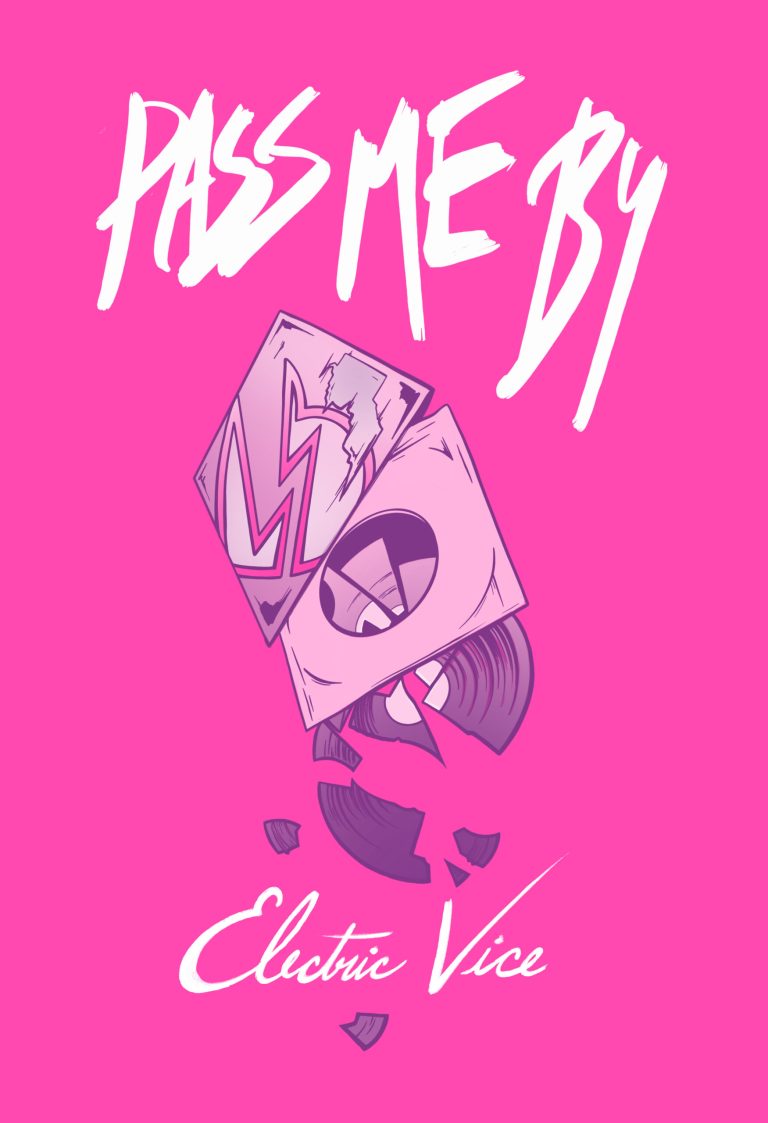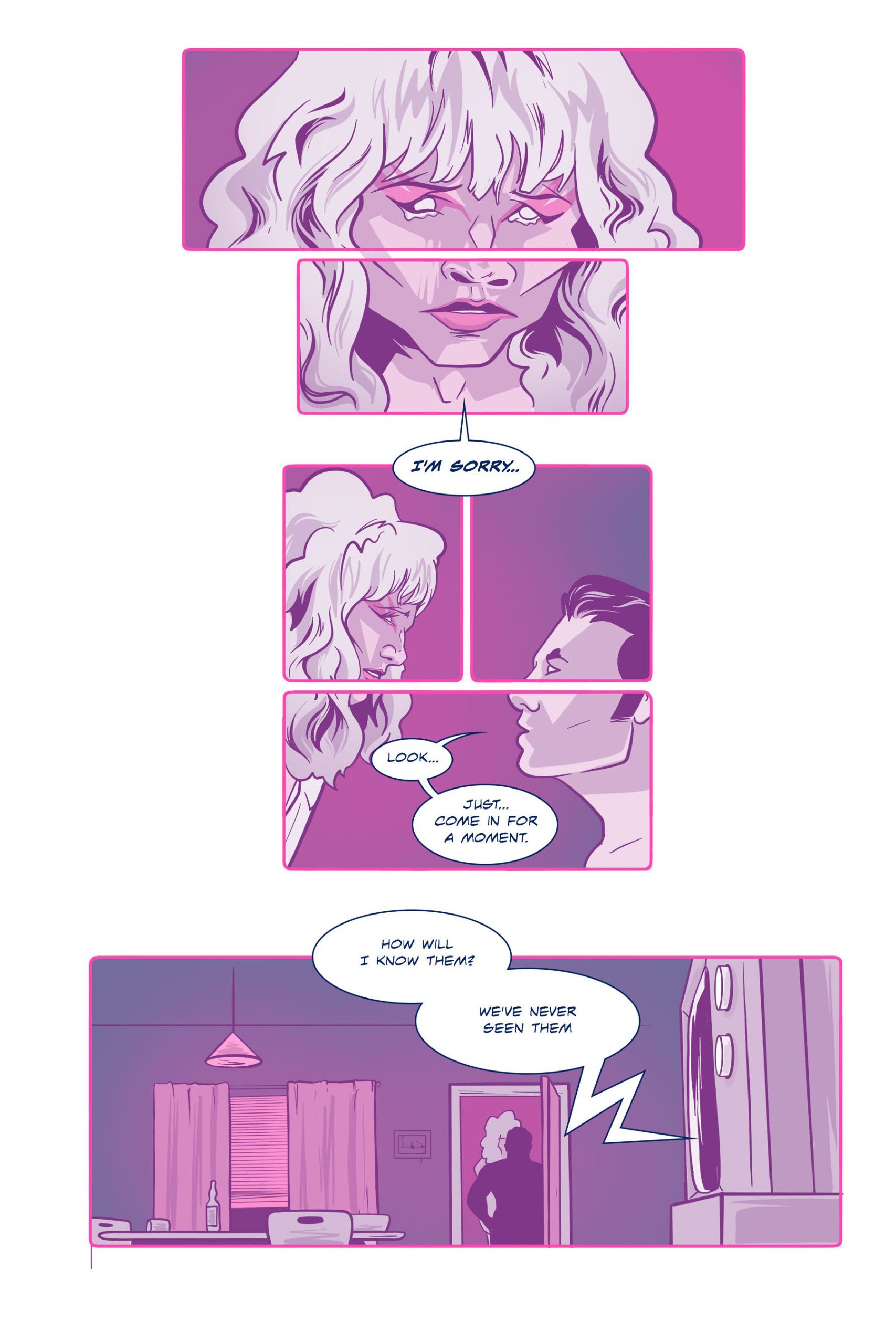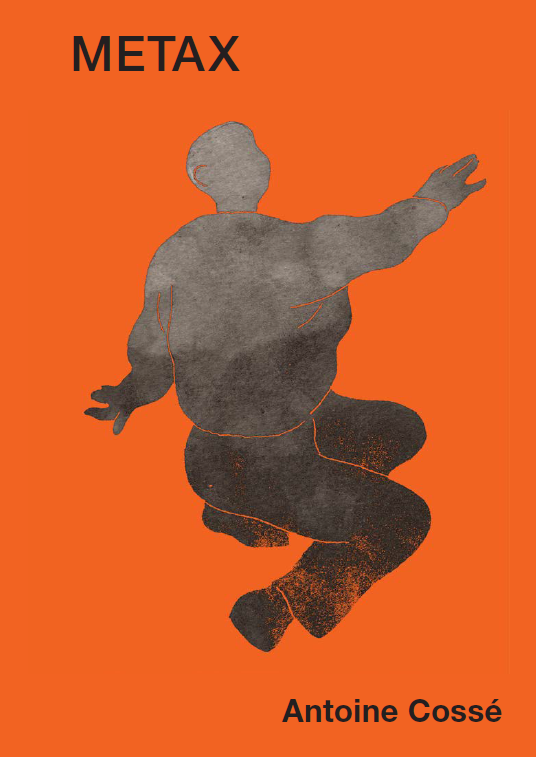Electric Vice, the second volume of the Pass Me By series, showcases the best of what the comics form can achieve when plied by artists with a poetic soul and a deft brush. Co-creators Kat Simmers (writer and illustrator) and Ryan Danny Owen (co-writer) craft a captivating series in which panels effortlessly follow one another like a string of notes chasing their inevitable conclusion. Electric Vice is an intoxicating smorgasbord of graphic design, musicality, meticulous breakdowns, pregnant silences, spectacle, crisscrossed timelines, heartbreaking visual parallels, and a limited color palette stretched to its absolute. If anybody is wondering what the next generation of comics should and does look like, look no further than Pass Me By.
This series somehow walks the line between an incredibly specific queer love story between characters Ed and Lou and a universal tale that speaks to the crises at the heart of our identity and humanity. Pass Me By Vol. 1, Gone Fishin’ (2019), asked painful and provocative questions like: who do you have left to become when there’s no more future left to grow into? Is who you have been all that you had hoped? These questions suggested a simultaneous looking forward and backward, effectively conveying the temporal disorientation of the aging Ed, who struggles with dementia. Throughout the series it can be hard to tell whether past Ed is daydreaming of future Ed, and who he might become, or if older Ed is reflecting on an accurate version of his younger self, or not. For the reader, this slippery timeline creates a thought-provoking hybrid hind-and-foresight that encourages reflection upon our own life story in progress. Electric Vice continues this process of unflinching self-reflection by persistently and painfully picking away at the nature of the stories we can’t tell ourselves, let alone others. When memory begins to deteriorate, who will tell the story of your life back to you? Who will remember life’s heartbreakingly unforgettable untold moments for you?
The questions that haunt the pages of Gone Fishin’ and Electric Vice are exquisitely explored and extended by every facet of the series’ art. Not to be constrained by the limited color palette, Simmers demonstrates how saturation can be used to poetic effect throughout Gone Fishin’. In the soft blush of the early morning sunrise, older Ed examines a piece of paper with bold lipstick pink scrawl that reads “XOXO Lou”. The subtle fading of the color throughout the work gives a diffuseness to the story, like it might slip away into the ether along with Ed’s memory. The diffuse coloration lends the work a gentleness and an intimacy indicative of the romance genre. Conversely, memories from Ed’s youth are fully saturated, bold and unabashed riots of deep purples, bright teals and hot pinks. As Ed hangs off the roof of a smashed up, careening VW Bug, the bold, saturated colors drive the narrative action and imply the psychedelic hyper-reality of Ed’s early memories.
This coloration trend continues throughout Electric Vice as the titular band, fronted by Lou, conquers stage after stage of 1970s western Canada in an epic whirlwind tour of spectacular glam-rock performances. Owen’s lettering doesn’t only provide the timbre, tone, and amplitude of Electric Vice’s performance, but adds to the outrageous action, animating the scene and enlivening it with motion and electricity.
However, just as in music, the silences are essential to this text, and these creators are not afraid to let the story unfold in crushingly silent visual sequences. Silence shapes the isolated home life of Ed at the outset of Gone Fishin’, the inner torment of transformation and self-reflection in Electric Vice, and each heart-stopping moment in between. The silence in Pass Me By tells its own story, conducting its own interrogation of each story’s central questions and themes.
Pass Me By uses every tool in the comics arsenal to create a provocatively sensual story - from Owen’s electric lettering to Simmers’ color saturation, and especially through strategic panel breaks applied throughout. The authorial eye is constantly moving across the scene as snatches of narrative are told through aspect-to-aspect image relations. While this approach alienates the reader at times by jolting them around scene, it also heightens the reader’s immersion into the world and mimics the protagonist’s distraction.
The use of panel breaks are incredibly strategic throughout the series. Even while occupying the same physical space, thin gutters accentuate the characters’ emotional divides. This technique is taken even further in Electric Vice as characters’ bodies are divided through panel breaks - between the torso and the waist, between the eyes and the lips. This visual division amplifies the reader’s emotional connection with the characters’ inner workings - their focus on the sadness of the eyes, the sensuality of the lips, the unbridgeable divide between what’s said and unsaid.
Simmers and Owen craft an incredibly complex and poignant narrative journey using every instrument at their disposal and the result is divinely harmonious. Pass Me By feels like something David Bowie would have created if he made comics instead of music: original. Ahead of its time. Utterly addictive.












